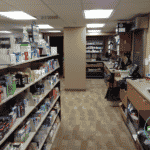Architectural Design In Surgery Departments
All areas of a hospital are incredibly important; however, one area that should take a bit more time and care when designing is a surgical department. The reason this should take a bit longer is because it is incredibly important to make sure that they are laid out and designed efficiently to prevent the spread of disease.
During surgery, the patient is incredibly vulnerable to any bacteria and infection because they have some type of open incision. Planning a well functioning surgical department is crucial in making sure the patient and doctors are safe and all procedures have positive results.
Since a proper surgical department is so important, how can we be sure that we are creating the best space possible? Here are some tips on what to focus on:
Reduce Stress
This means that you should be doing your best to reduce stress for the patients, but also for the family and staff. Creating a positive space is the best way to ensure that patients and staff have the least stressful experience as possible. When it comes to patient care, less stress promotes quicker and happier healing, which is exactly what you want after a surgical procedure.
Maximize Infection Prevention
When designing your surgical space, you want to be sure that you are designing it with sterile storage in mind. You should have all of the tools needed readily available and stored properly so they are easy to find and use when needed. This can help be sure that everything stays sterile and will reduce the risk of infection.
Promote Timely Care
You should make sure that the hospital and surgical department is laid out in a way that promotes timely care of the patient and the entire process. It should be efficient and productive when moving the patient throughout the space and make it easy for doctors and nurses to check in and do what needs to be done for the patient.
Accommodate Future Technology
When building the surgery department, it should be built in a way that it can stay flexible. Make room for all of the current technology and procedures, but also leave room for future technologies and new processes to be able to be implemented. This will make for an efficient and evolving surgery department.
Provide A Healthy Environment
Of course, being sure that your space is clean and has enough sterile storage is important to make sure that the patient stays as healthy as possible.
Zones
No single design is perfect for every single hospital, but most surgical departments should have three distinct zones:
- Unrestricted: this is an area that anyone can be in. This includes waiting rooms or reception areas
- Semi-restricted: these are areas that typically lead to restricted areas and areas with sterile storage, surgical prep sinks and where surgical instruments are stored. This is limited to staff and patients entering surgery
- Restricted: this area is the operating rooms, procedure rooms and requires surgical attire including masks
How To Prepare
There are a few ways to prepare for designing your surgical department. First, you should get input from the surgeons and physicians throughout the entire process. They can talk about their workflow, their patient interaction, equipment needs and can give you a good insight into what type of layout and design would fit best with your specific facility.
You also should be looking at multiple designs. Not only does this help you compare costs, but can help you take the best pieces from each design, creating a custom layout perfect for specific needs.
Lastly, you should be planning for sufficient surgery storage. We offer surgery department storage that allows all of the equipment you need to be stored efficiently and kept sterile. Contact us today and let’s get started on your custom, efficient surgery department!






